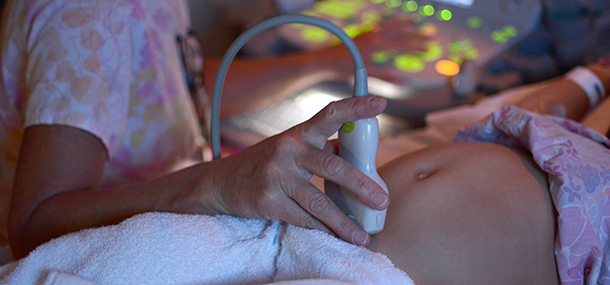

An abdominal (belly) ultrasound is the preferred initial method to determine if your child has appendicitis. An ultrasound technologist will perform the test by using a small camera called a transducer that uses sound waves to visualize the internal organs.
The appendix is very small tubular-shaped part of the intestine located in the right lower abdomen at the junction of small bowel and colon. The appendix can be hard to see when it’s normal since it often blends in with all the neighboring bowel loops – like one small tree in a forest. If the appendix is inflamed, irritated, or infected (appendicitis), then it usually stands out from the surrounding structures and is easy to see.
To check for appendicitis, first the technologist will apply ultrasound jelly on your child’s belly to allow the transducer to slide on the skin. During the exam, the technologist will be looking for causes of pain, intestines (bowel) for movement and any signs of inflammation or infection while taking pictures for the radiologist to review. Children often complain of pain when the transducer slides over their inflamed appendix. This is actually helpful to determine that appendicitis is the cause of their belly pain.
 Illustration: Location of the appendix in the digestive system (en.wikipedia.org/wiki/Appendicitis)
Illustration: Location of the appendix in the digestive system (en.wikipedia.org/wiki/Appendicitis)
Once the technologist has finished taking pictures, the technologist often checks with the radiologist to make sure that no additional pictures are needed. In some instances the radiologist may come in to scan an area again, trying to assess if your child’s pain is associated with one or more of the internal organs being imaged. This is a good opportunity to ask questions about the exam and voice any concerns you have about your child’s belly pain. If there is anything found during the exam that needs to be immediately addressed, the radiologist and your pediatrician will discuss this with you. If everything looks normal, you will be sent home and your pediatrician will contact you with the results.
Contributed by Dr. Sara M. O’Hara and edited by Wendy Bankes.